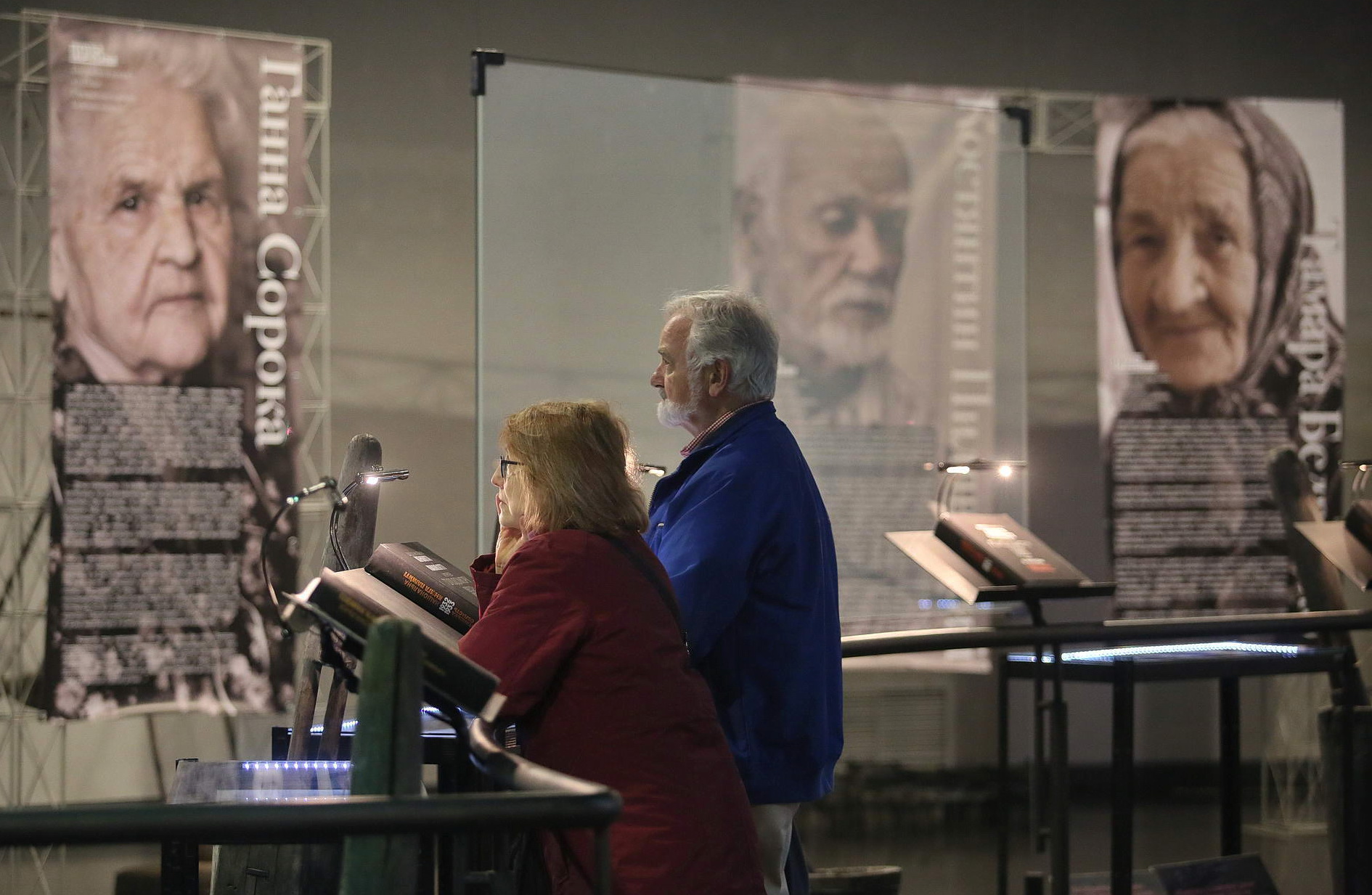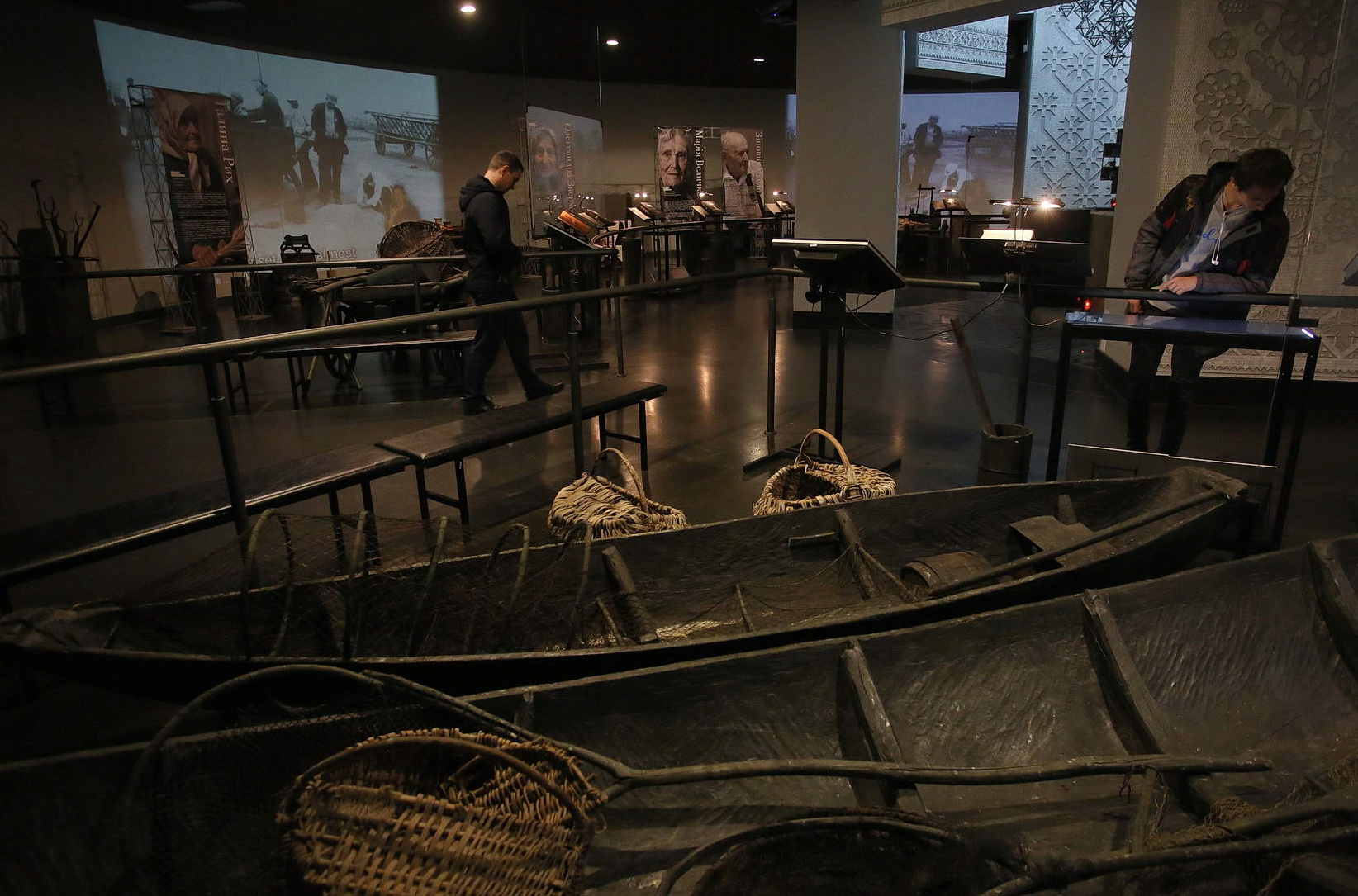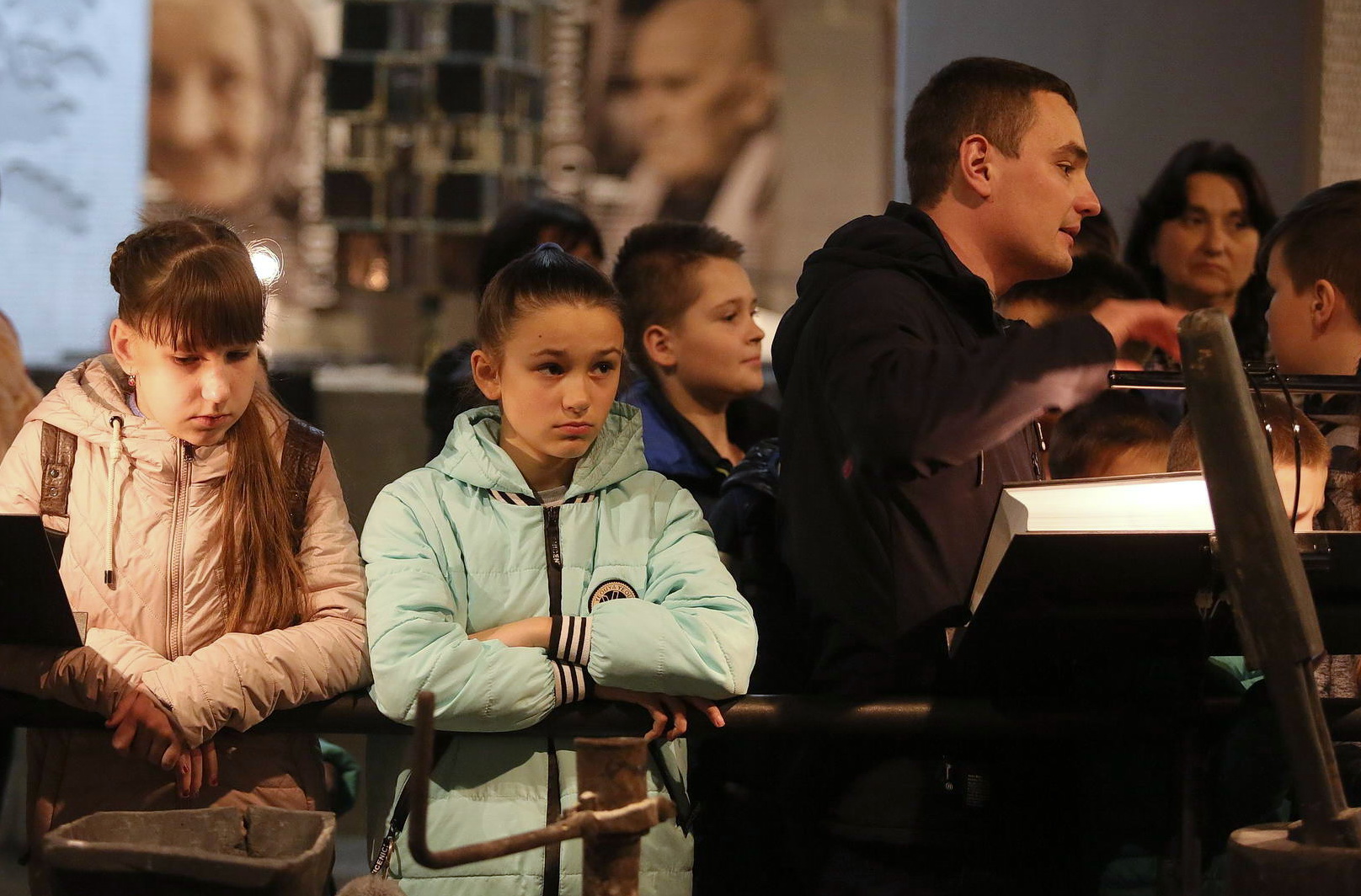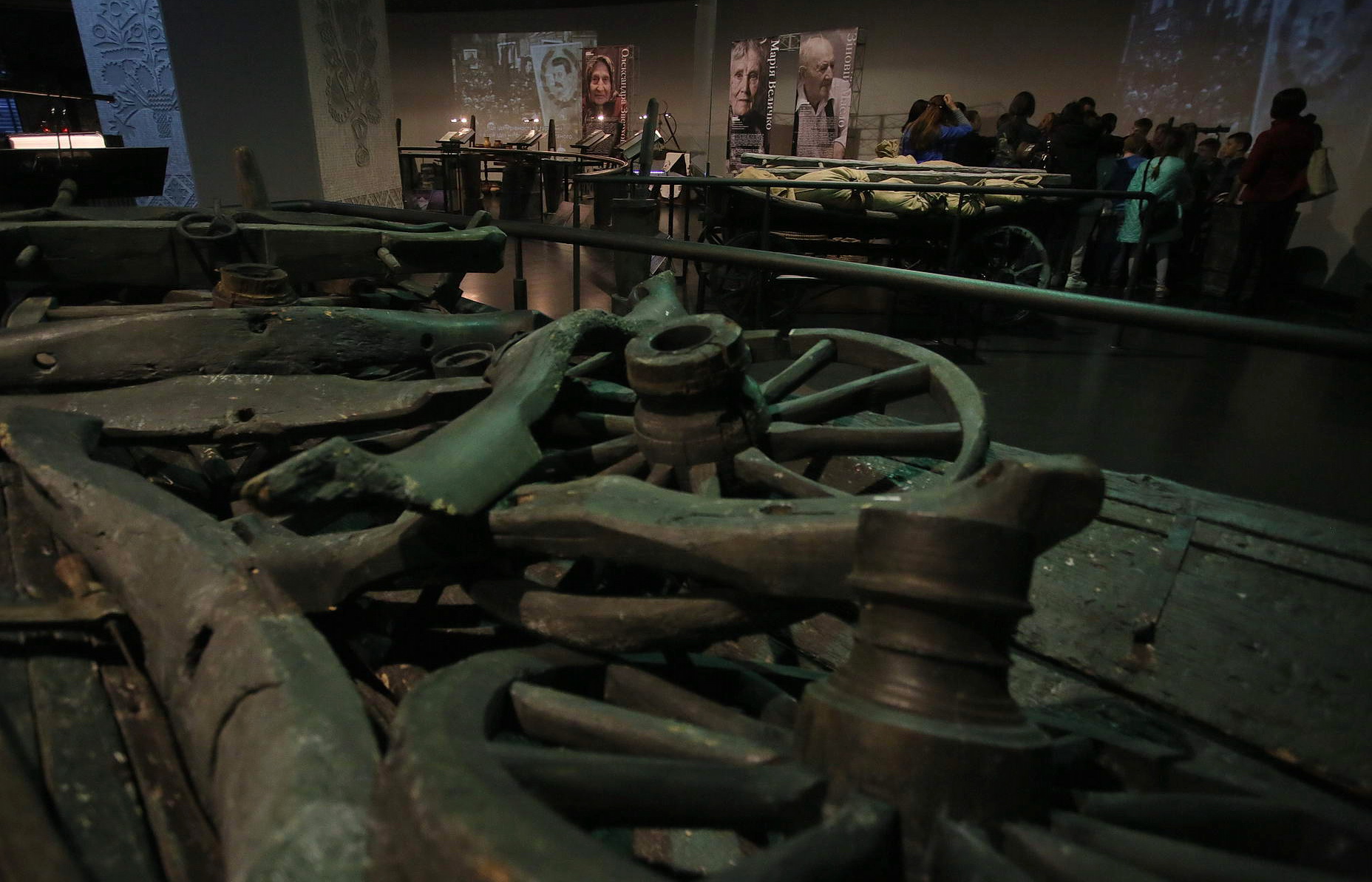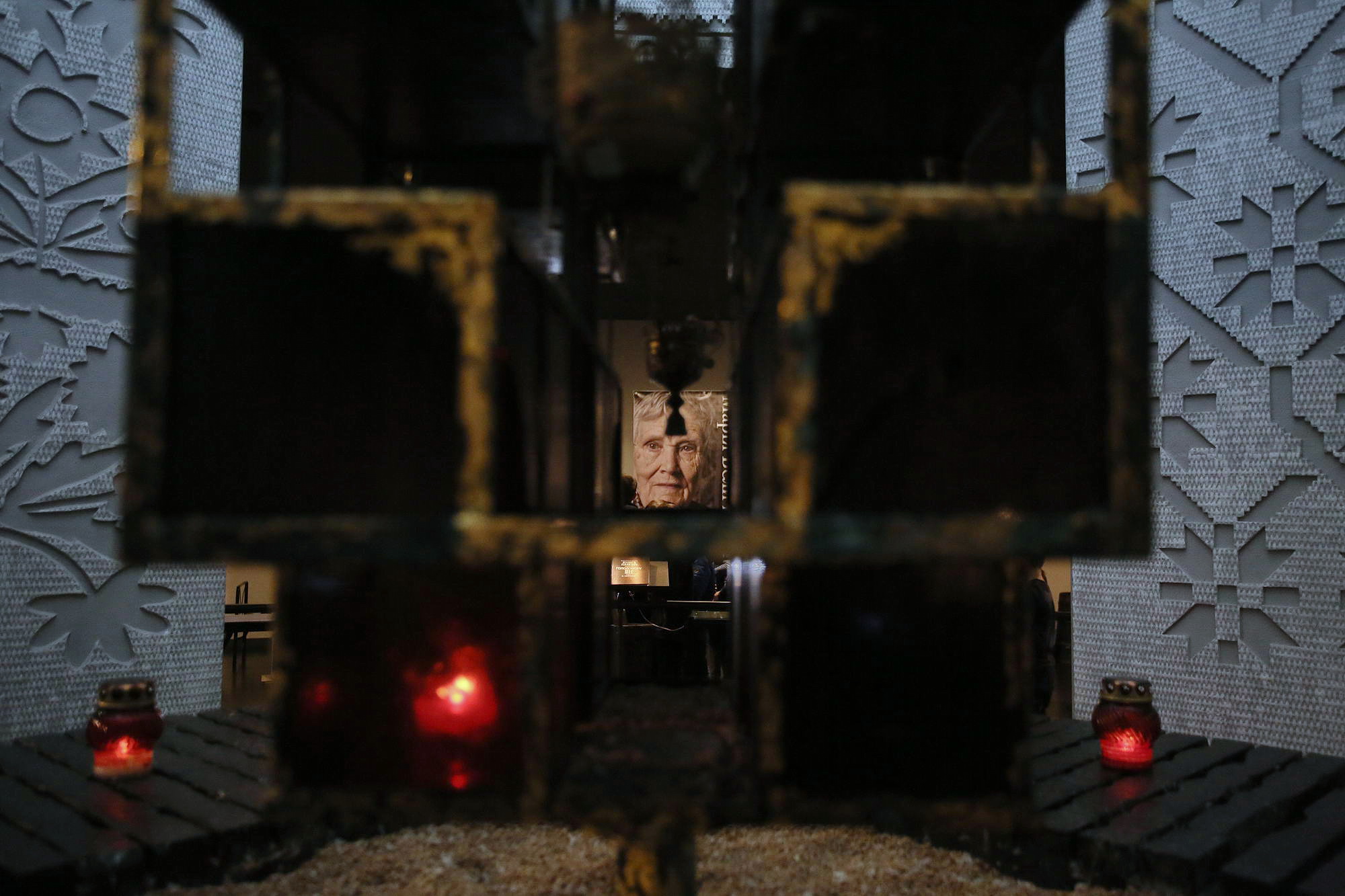Editor’s Note: This is the seventh story in the Kyiv Post’s “Honest History” project, a series of stories and videos that aim to debunk myths about Ukrainian history that are used by propagandists. This series is supported by the Black Sea Trust, a project of the German Marshall Fund of the United States. Opinions expressed do not necessarily represent those of the Black Sea Trust, the German Marshall Fund or its partners.
At the beginning of 1933, Oleksandra Handzyuk, then an 18-year-old Ukrainian woman, lived in a big family that included her parents and five siblings.
By the end of spring, besides her, only her mother and a sister were alive. The rest starved to death, one by one.
So did nearly 250 of their neighbors in Kharliyivka, now a village of 686 people in Zhytomyr Oblast, some 130 kilometers west of Kyiv.
Altogether, the Joseph Stalin-orchestrated famine in 1932-1933 killed at least 3.9 million people in Ukraine and Russia’s southern region of Kuban. Some estimates of the death toll reach 7 million deaths.
Despite the scale of the tragedy, Ukraine had to regain independence in 1991 before survivors could speak openly about the mass starvation, aimed at destroying Ukrainian nationalism and breaking resistance to Soviet collectivized farms.
The Soviets denied there had even been a famine, much less that it had been deliberate.
Today, the famine, known as the Holodomor (from Ukrainian holod, meaning starvation or famine, and the verb moryty – to inflict death) is the subject of controversy between Ukraine, who demands that the famine be recognized internationally as genocide against Ukrainians, and Russia, which denies that the famine was artificial and says several Soviet states suffered equally from it.
But the fact that Holodomor was indeed an act of genocide has been established by a number of scholars, including Andrea Graziosi, Raphael Lemkin, Norman Naimark, Timothy Snyder, Nicolas Werth and Anne Applebaum. It was recognized as genocide by 14 foreign countries, including Canada, but not the United States.
Bohdan Klid, the assistant director of the Canadian Institute of Ukrainian Studies at the University of Alberta, says the effects of the Holodomor’s devastation linger today.
“What happened in 1932-33 was like an atom bomb, basically,” Klid says.
Not the first famine
After several attempts to establish an independent Ukrainian state in 1917-1919 and the defeat of the national movements, the Bolsheviks occupied Ukraine and included it in the Soviet Union in 1922 as the Ukrainian Soviet Socialistic Republic.
A catastrophic drought, combined with Bolsheviks’ confiscation of food, led to mass hunger in Ukraine in 1921-1923.
Between 250,000 and 500,000 people, mainly in the south of Ukraine, the hardest-hit region, died over the time of that famine. In Russia, Volga region and North Caucasus were also affected.
At the same time, the Soviet regime changed its repressive course and adopted the so-called New Economic Policy. It put an end to compulsory grain collection from villagers. It also introduced nativization, a policy that fostered native non-Russian languages and culture in Soviet republics, including in Ukraine.
The head of the Soviet state, Vladimir Lenin, thought nativization would make the Bolshevik regime less foreign and prevent further rebellion, according to Pulitzer Prize-winning American historian Anne Applebaum’s book “Red Famine: Stalin’s War On Ukraine.”
But the Soviet dictator Joseph Stalin, who took over after Lenin’s death in 1923, thought Ukrainization posed a threat.
“He was afraid that this would harm him,” Applebaum told Radio Free Europe/Radio Liberty. “So, the famine, along with a crackdown on Ukrainian intellectuals – these two things together were an attempt to make sure there would be no counterrevolution coming from Ukraine.”
In 1928, Stalin introduced the first five-year plan and a course for industrialization. Villagers were forced to give up their land and property and join collective farms, called “kolhosp.” Thousands of Ukrainian intellectuals, teachers, students, and religious leaders were arrested.
Around the same time, the Soviets conducted dekulakization, a campaign to repress wealthy villagers or simply those opposed to Soviet rule. They were labeled “kulaks” and the Bolsheviks seized all their belongings and deported these families to remote areas of northern Russia and Central Asia, and sent them to concentration camps.
For Ukrainian villagers, the hardships peaked in 1932.
Famine begins
For years before 1932, the Soviets requisitioned strict quotas of grain from villagers in Ukraine and other agricultural areas in the Soviet Union, including in Russia. The grain was used to feed big cities and was sold abroad.
Because of it, the harvest of 1932 was smaller than in the previous years: the villagers had less grain to sow and protested by not sowing, knowing that everything would be confiscated.
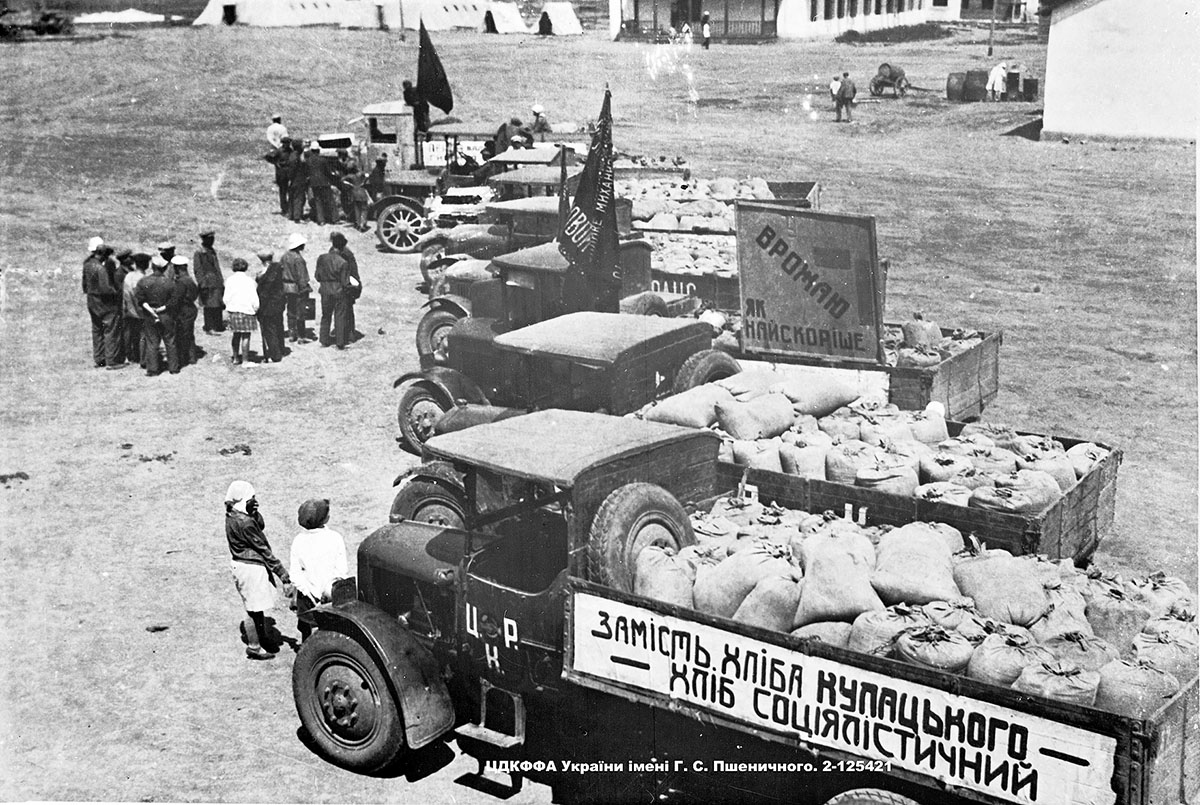
Trucks loaded with grain sacks stand in a row at a collective farm in Kahovka, Kherson Oblast, in 1930.
“In place of the kulaks’s bread – socialistic bread,” the sign on the truck reads. (Central State Film, Photo and Sound Archive of Ukraine)
Despite that, the Soviets still confiscated large quotas of grain, leaving many villagers with very little food remaining.
This is where events in Ukraine took a different route than in other Soviet republics.
In late fall of 1932, soon after the regular grain requisition, the Soviet commissars paid second visits to the homes of Ukrainian villagers. This time, they took every scrap of food.
It was the start of the Holodomor.
Why Ukraine?
What was special about Ukraine? For Stalin, starving Ukrainian villagers was a way to weaken them, destroy their independence and connection to private farms, which formed the basis of how society was organized.
Stalin wanted to ensure Ukrainians wouldn’t rebel again. His letters show that he was worried that Ukraine could break away from the union.
“We could lose Ukraine,” Stalin wrote to his associate Lazar Kaganovich, who was in charge of Ukraine, in August 1932.
Villagers comprised 81 percent of Ukraine’s population, according to the last pre-Holodomor census in 1926. Suppressing them would suppress the country, in Stalin’s calculation.
How they did it
The Soviets imposed famine on Ukrainians in several key steps.
First, in October 1932, Stalin sent his associate Vyacheslav Molotov to Ukraine. He put more pressure on peasants, ordering to seize food, cattle, and even clothing.
The villages that did not meet the food quota were blacklisted and put under severe repression, including a ban on trading. Stealing even a tiny amount of grain was punished by death or imprisonment in a labor camp.
To prevent the villagers from fleeing the republic in search of food, in January 1933, the borders of Soviet Ukraine were closed. An internal passport system was introduced. The villagers were banned from traveling by train.
Applebaum calls it “a famine within the famine, disaster specifically targeted at Ukraine and Ukrainians.”
It succeeded: the national movements faded. Surviving peasants joined collective farms.
The famine ended in May 1933 after Stalin approved food aid to Ukraine.
Thirty-one million people lived in Ukraine before Holodomor. At least 3.9 million, or more than 10 percent, died in the winter of 1932-1933. Most of the deaths happened in the villages, with only some 400,000 dying in urban areas.
The terror did not stop, however. Further repression and the arrest of Ukrainian intellectuals followed, including the so-called Executed Renaissance, a series of arrests and executions of young Ukrainian writers, poets, filmmakers, theater directors, journalists and scientists.
Suppressed memory
The Holodomor, like other repressions, was a banned topic in the Soviet Union.
The common narrative saw the 1930s as the time when the country successfully introduced collectivization and built socialism despite the resistance of kulaks, wealthy villagers or those simply deemed to stand in the way of Soviet power.
“It’s sort of a happy-ending narrative,” historian Klid says.
The survivors had to stay silent and praise the leaders who had starved them.
“People remembered, but it was like a numb memory,” says Ukrainian scholar and Harvard Ukrainian Studies fellow Tetiana Boriak.
In the diaspora
While the Soviets suppressed the memory of the Holodomor, it started to get out abroad.
After World War II, some Ukrainians fled to Europe, the United States and Canada, where they published the first memoirs and testimonies on the famine. The best-known fiction works on the Holodomor, “Maria” by Ulas Samchuk and “Yellow Prince” by Vasyl Barka, were published abroad. Today, both are the required reading in Ukrainian schools.
In the 1980s, American historian James Mace studied the Holodomor as the executive director of the U.S. Commission on the Ukraine Famine, authorized by the U.S. Congress.
“The diaspora was spearheading the investigation,” Klid said.
An important milestone was the publication of “The Harvest of Sorrow: Soviet Collectivization and the Terror-Famine” (1986) by Anglo-American Stanford University historian Robert Conquest. After that, “it really wasn’t possible to deny that the famine did not take place,” according to Klid.
That led to the first public acknowledgment of the famine from Ukrainian Communist Party leader Volodymyr Shcherbytskyi in 1987. However, he blamed a poor harvest.
But Ukrainian historians quickly took advantage of the new Soviet policy of openness under Mikhail Gorbachev to investigate the topic further.
Russian denial
The Holodomor has been one of many points of disagreement between Ukraine and Russia.
Russia doesn’t deny the famine took place. However, the Russian government and historians maintain the famine was neither artificial nor directed at Ukrainians specifically.
Instead, the Russian narrative, embodied in an official statement by the Russian parliament in 2008, considers the famine of 1932-1933 to be an unintentional consequence of collectivization and the industrialization of the country.
The same statement praises the successes of the bloody decade, listing the factories and plants built in the 1930s across the country, implying that the deaths weren’t in vain.
It doesn’t help that there are few documents left. Ukrainian historians suspect that most of the documents were destroyed soon after the famine.
However, abundant evidence remains about the goal of the famine, including letters from Vyacheslav Molotov, Lazar Kaganovich and Stalin, as well as oral testimony.
“You cannot just say that 10,000 testimonies are fiction,” says Boriak, who summarized the testimonies in her book “1933: ‘And why are you still alive?’” (2016).
Russian historians and officials disagree. Russian Foreign Ministry representative Mariya Zakharova in November told Russia Today that the idea that the famine aimed at destroying Ukrainians was untrue and “political speculation.”
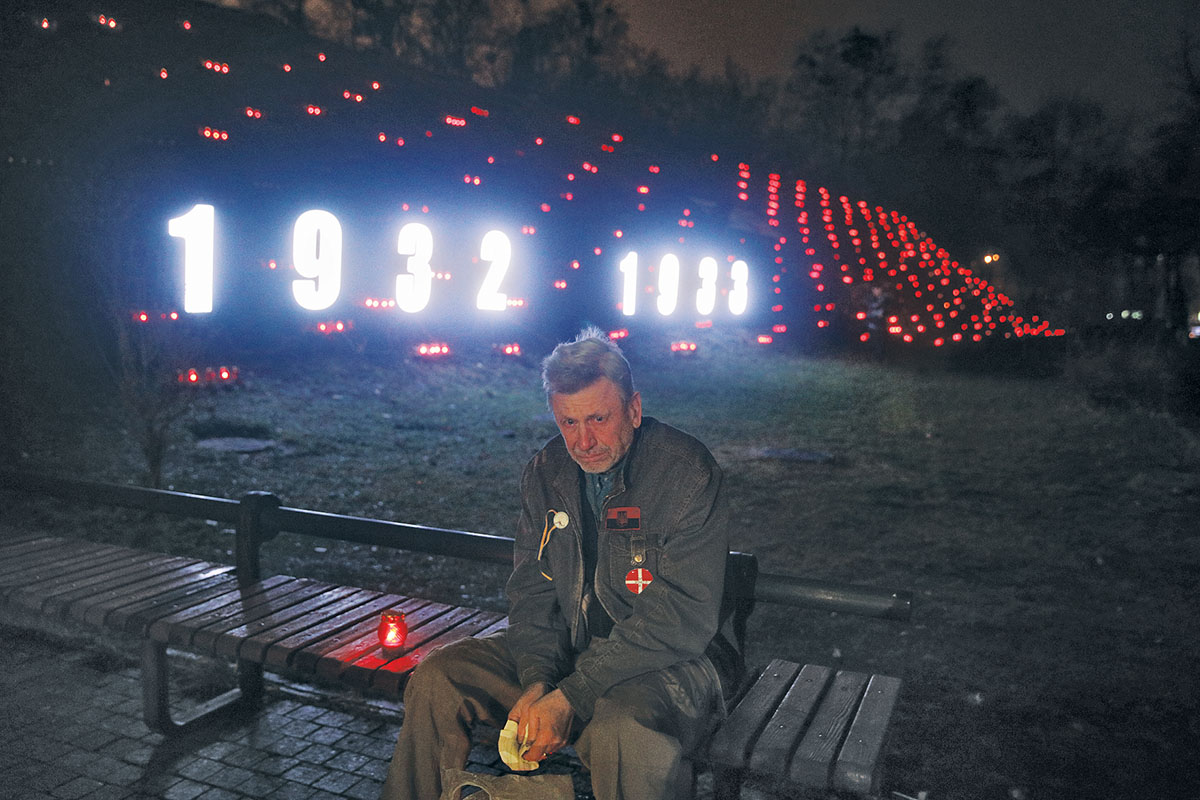
A man sits on a bench with a candle in front of the sign 1932-1933 that represents the years of famine at the Holodomor victims memorial day in Kyiv on Nov. 25. (Volodymyr Petrov)
Boriak counted around 20 theories that are used by Russian historians to explain the famine’s origin, all of them contradicting the Ukrainian version: that it was artificial.
The Russian theories link the famine either to natural factors, like a bad harvest or an epidemic of typhus, or negligence. Some say that Stalin wasn’t aware of what happened, and sent food aid immediately after learning about it in spring 1933.
Boriak says that Stalin sent food aid not out of compassion, but because he needed a labor force to work the fields in the new season. According to her, the food was distributed only to villagers who showed up for field work.
“No one denies the famine in other Soviet republics, but what happened to Ukrainians, the Kuban and Kazakhstan is a completely different story,” Boriak said.
Some historians looking to undermine the Ukrainian narrative point to the fact that Ukrainians helped seize food from their compatriots. Ukrainian historians say that the perpetrators of the requisition campaign were specifically ordered to involve locals in it.
The theories make their way into Russian state-owned or state-influenced media, helping spread them – including abroad.
The denial of the artificial famine plays well into the Soviet nostalgia and rehabilitation of Stalin that has been taking place under President Vladimir Putin, the dictator who has ruled Russia since 2000.
“It is always difficult to admit that one’s leader and one’s history has a number of dark spots or events that are criminal in nature,” Klid said.
Genocide
The Ukrainian parliament in 2006 declared the Holodomor a deliberate act of genocide against the Ukrainian nation. However, only 14 foreign countries and 10 states in the United States have officially acknowledged it as genocide.
Among Ukrainians, 77 percent consider the famine of 1932-33 to be an act of genocide, according to a poll conducted by the sociological group Rating in September.
The answers varied based on the language of the respondents. Ukrainian-speaking people were more likely to believe that Holodomor was an act of genocide than their Russian-speaking compatriots.
The Holodomor has not been recognized as genocide by the United Nations. Its 1948 convention on genocide lists racial, ethnic, national and religious groups as possible targets.
Ukrainian historian Stanislav Kulchytskyi, who studied the Holodomor for more than 30 years, thinks it’s no accident that a social group — Ukrainian villagers — isn’t listed in the U.N. convention. He attributes it to the efforts of Soviet diplomats.
Today
Some historians think that more than 50 years of suppression of the Holodomor mean that the Ukrainian people still carry hidden mental wounds.
“The consequences are still being felt to this day, partly because the memory of the famine was suppressed and survivors were forced to cover it up and promote a different narrative of what took place, a great lie,” Klid said.
Today, Ukrainians commemorate the victims of the Holodomor every year on the last Saturday in November by putting lighted candles in their windows.
Meanwhile, Ukraine continues to lobby for international recognition of the Holodomor as genocide.
Historians and the Ukrainian diaspora are also lobbying for an amendment to the U.N. convention on genocide and for the Holodomor to be declared an act of genocide by the General Assembly of the United Nations. n

